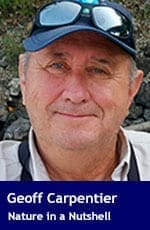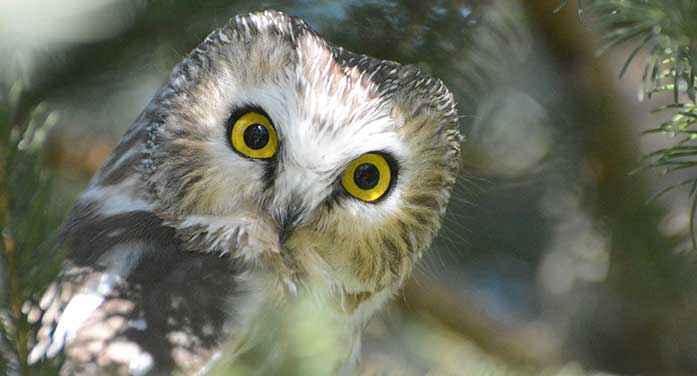 With COVID-19 an overriding part of our lives, many folks have begun to see and appreciate nature like never before.
With COVID-19 an overriding part of our lives, many folks have begun to see and appreciate nature like never before.
Whenever we encounter nature, and while our actions may seem harmless, they might be dangerous to wildlife. Wildlife can be negatively impacted by what we do and how we do it.
Having studied wildlife most of my life, I can’t count how often people tell me how great it was to see how close they could get to this animal or to that bird. While I appreciate their enthusiasm and support their interest, this is unacceptable and harmful behaviour.
So I want to share some tips on the proper way to view and approach wildlife.
Birds are one of the greatest draws in nature. They’re friendly, co-operative and always engaging – or so we think. Owls, in particular, draw a lot of attention. Mysterious and the stuff of folklore, they never fail to please. We see them as peaceful creatures that tolerate us without effect.

Northern Saw-whet Owl
Nothing could be farther from the truth. While what I’m going to say is in reference to owls, the principles are the same for all wildlife encounters.
 Owls need to hunt to live. If we see one out in the open, they’re hunting – simple as that. Prey may seem abundant but catching prey isn’t always easy. Many failed attempts usually precede a successful capture. If the owl fails and misses even one meal, this can, over a few days, be fatal as their energy budget is upset.
Owls need to hunt to live. If we see one out in the open, they’re hunting – simple as that. Prey may seem abundant but catching prey isn’t always easy. Many failed attempts usually precede a successful capture. If the owl fails and misses even one meal, this can, over a few days, be fatal as their energy budget is upset.
If we stand between them and the prey, they have to look elsewhere; if they stay, they might be distracted. No predator can hunt successfully when distracted.
We may think an owl is tolerating us, but it is more likely trying to ignore us. It is hungry, and once it finds a good hunting location its fear is overridden by the need to survive. Migrant owls, such as the snowy owl, may have travelled thousands of kilometres to get here, so they’re already stressed and weakened. Even healthy-looking birds can be very skinny under those feathers – don’t be fooled.
Even in late winter, great horned and screech owls might already have eggs or young in the nest. Disturbing them may mean the young don’t get enough food and die – a very sad and unnecessary outcome.

Barred Owl
So what should we do?
- Don’t not look for them – it’s okay as long as you always do it with the animal’s well-being foremost in your mind.
- Don’t get too close – if the owl (or any animal) looks at you directly, you’re too close. Stay on the edge of the habitat and use your binoculars or a scope for viewing and a telephoto lens for photography. Stay hidden behind your car, a bush, or a tree.
- Avoid the use of flash photography, especially after dark.
- Eliminate noise to avoid interfering with a bird’s auditory hunting. If you’re viewing from a car, turn off the engine; if you’re with others, talk in a whisper (if it’s necessary to talk at all).
- Don’t use audio recordings to draw a bird out.
- Don’t alter the landscape to get a better picture – don’t cut branches or trim foliage when a roosting bird is found.
- Don’t intentionally flush an animal to see it fly or run.
- If a bird flies away or an animal runs on its own, don’t pursue it.
- Don’t disturb roosting owls, as they might become dinner for a larger predator. You’ve had your encounter – just be satisfied with that.
- Don’t feed owls or other birds of prey anything (such as mice) that may cause them to get used to people. This can result in collisions with cars since this action is usually taken by people near roadways.
- Please use discretion when sharing the location of an owl or other significant wildlife. Usually, it’s best to provide details only to people you can trust to treat the animal safely and with respect.
If an animal is staring at you, it’s concerned about you. Don’t be afraid to enjoy nature – just do it on their terms and with their survival in mind.
Geoff Carpentier is a published author, expedition guide and environmental consultant. Visit Geoff on LinkedIn, Instagram and Facebook. For interview requests, click here.
The views, opinions and positions expressed by columnists and contributors are the authors’ alone. They do not inherently or expressly reflect the views, opinions and/or positions of our publication.
© Troy Media
Troy Media is an editorial content provider to media outlets and its own hosted community news outlets across Canada.

